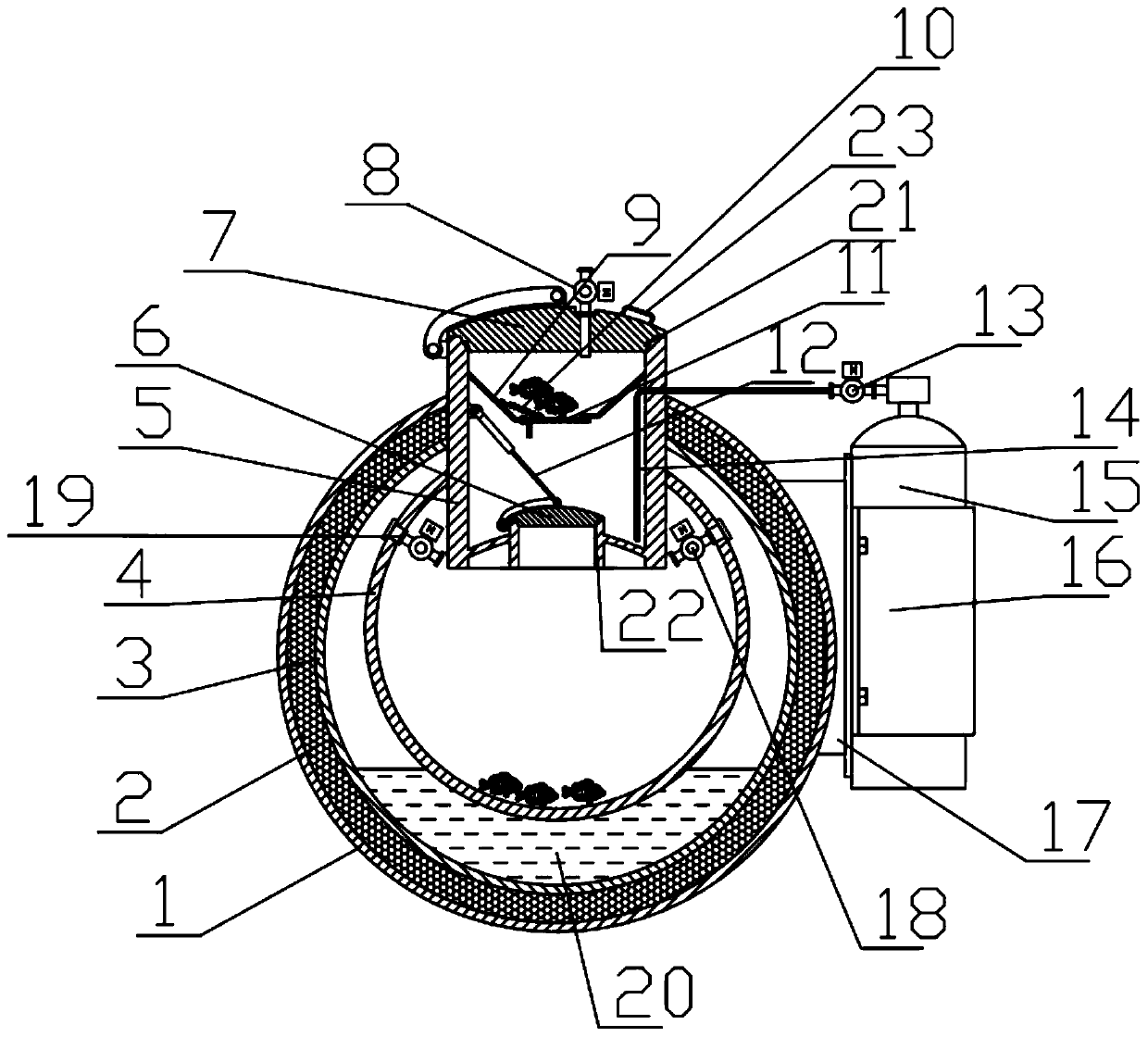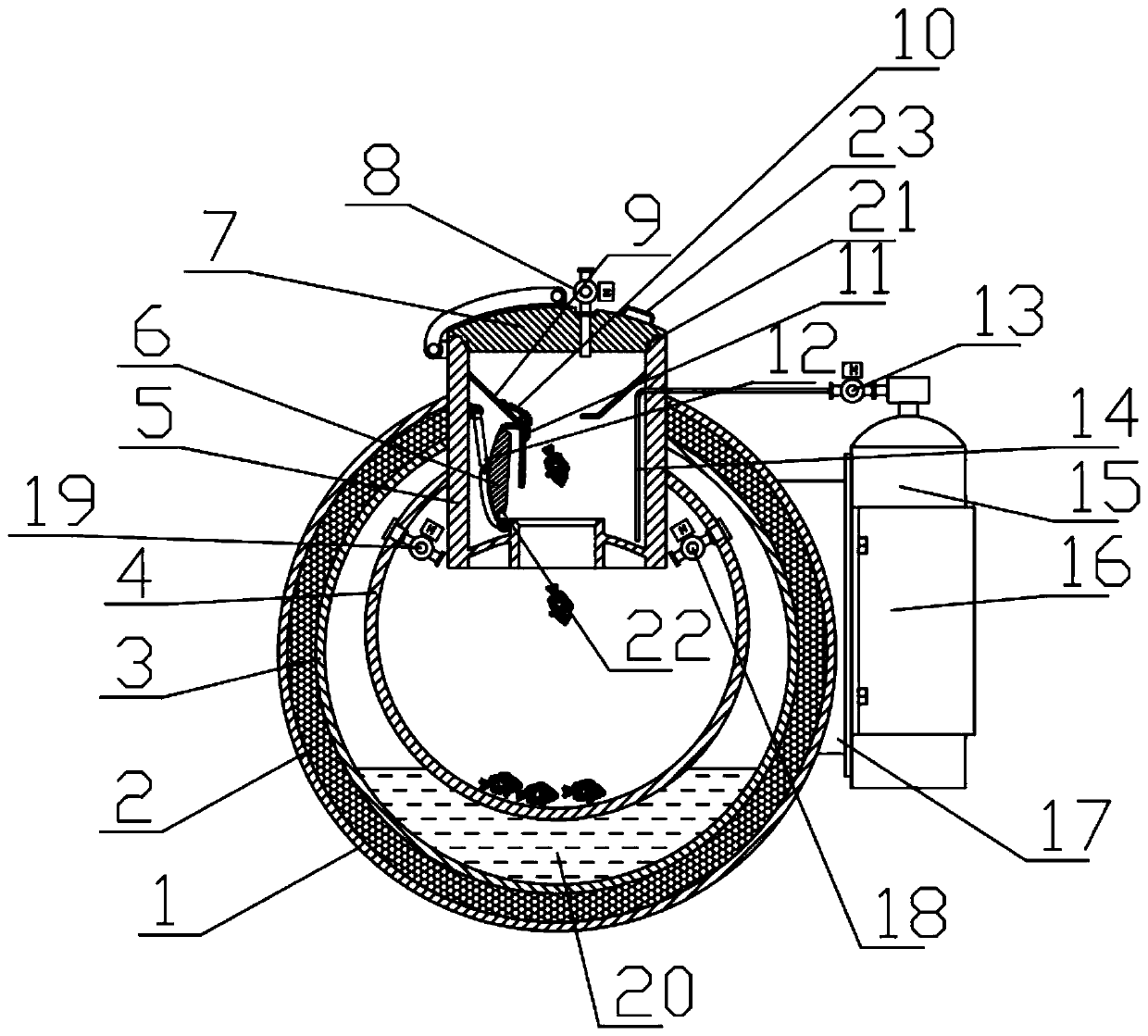Biological low-temperature storage device for deep-sea submersible
A low-temperature preservation and submersible technology, which is applied in household refrigeration devices, preservation and packaging of human or animal bodies, etc., can solve problems such as loss of biological in-situ characteristics, loss of culture and research value, and changes in biological characteristics of biological samples. , to achieve the effect of improving in-situ fidelity, compact structure and simple structure
- Summary
- Abstract
- Description
- Claims
- Application Information
AI Technical Summary
Problems solved by technology
Method used
Image
Examples
Embodiment Construction
[0026] The specific implementation manner of the present invention will be described below in conjunction with the accompanying drawings.
[0027] Such as figure 1 and figure 2 As shown, the deep-sea submersible biological cryopreservation device of the present embodiment includes a pressure-resistant enclosure 5 with a hollow cylindrical structure, and a bottom hatch cover 6 is installed at the inner bottom of the pressure-resistant enclosure 5 through a support frame structure. A hydraulic cylinder 12 to drive its opening and closing is installed between the outer middle position of the hatch door of the cover 6 and the inner wall of the pressure-resistant enclosure 5, and a conical guide cylinder 9 is installed on the upper part of the inner wall surface of the pressure-resistant enclosure 5, and the bottom surface of the conical guide cylinder 9 The tray 11 is installed through the pin shaft, and the tray 11 is opened downwards. The bottom end of the tray 11 is provided ...
PUM
 Login to View More
Login to View More Abstract
Description
Claims
Application Information
 Login to View More
Login to View More - R&D
- Intellectual Property
- Life Sciences
- Materials
- Tech Scout
- Unparalleled Data Quality
- Higher Quality Content
- 60% Fewer Hallucinations
Browse by: Latest US Patents, China's latest patents, Technical Efficacy Thesaurus, Application Domain, Technology Topic, Popular Technical Reports.
© 2025 PatSnap. All rights reserved.Legal|Privacy policy|Modern Slavery Act Transparency Statement|Sitemap|About US| Contact US: help@patsnap.com


